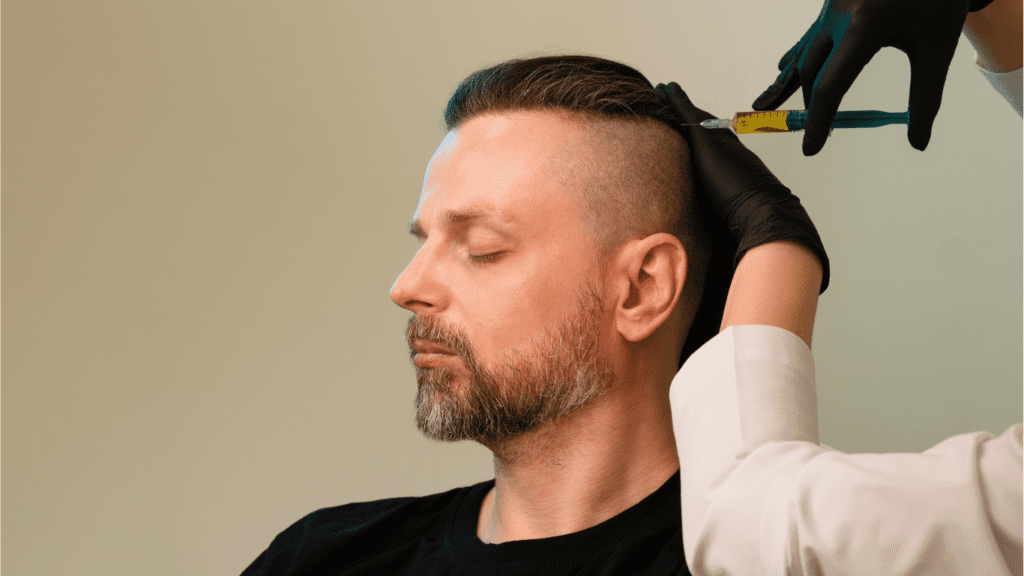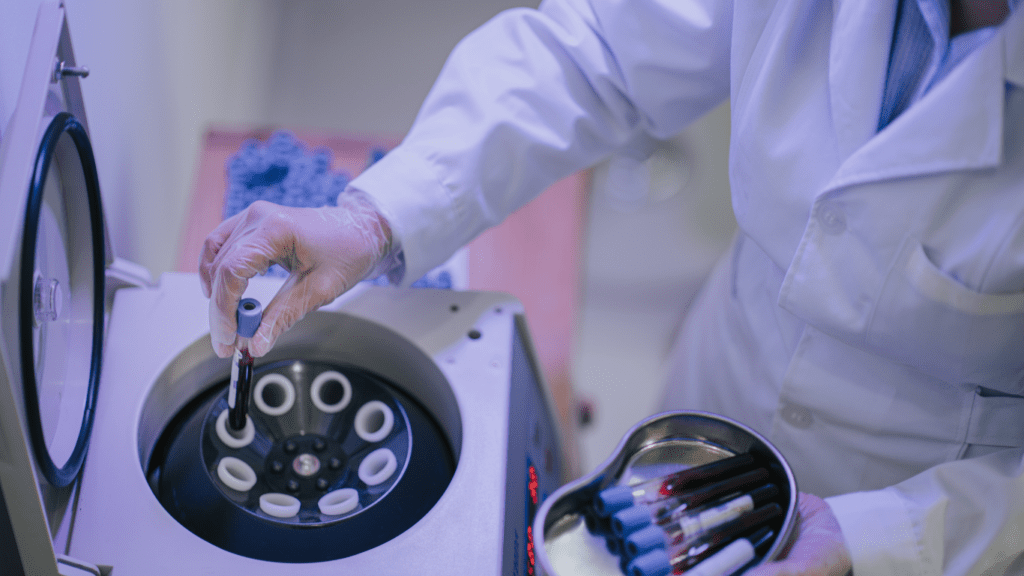
In the ever-evolving landscape of hair restoration, two treatments stand out for their innovative approach to combating hair loss: Growth Factor Concentrate (GFC) Therapy and Platelet-Rich Plasma (PRP) Treatment. As individuals grapple with hair thinning and loss, the quest for an effective solution has never been more critical. This comprehensive guide aims to shed light on GFC and PRP treatments, comparing their processes, benefits, and effectiveness. Whether you’re just beginning to notice hair loss or are looking for ways to rejuvenate your hair, understanding these cutting-edge therapies could be your first step towards a fuller, healthier head of hair.
Understanding Hair Loss and Restoration
The Science Behind Hair Loss
Why do we lose hair? Hair loss can stem from various factors, including genetics, hormonal changes, stress, and nutritional deficiencies. At its core, hair loss often involves the miniaturization of hair follicles, leading to thinner hair strands and, eventually, hair fall.
Overview of Hair Restoration Treatments
The hair restoration field has seen significant advancements, with treatments ranging from topical solutions and oral medications to surgical options and cutting-edge therapies like GFC and PRP.
What is GFC Hair Treatment?
Definition and How It Works
Growth Factor Concentrate (GFC) Therapy is a groundbreaking hair treatment that utilizes your body’s growth factors to stimulate hair follicles and promote hair growth. How does it work? A small blood sample is taken, processed to concentrate the growth factors, and then injected into the scalp, targeting areas of thinning.
Key Benefits of GFC for Hair Restoration
GFC treatment offers several benefits:
- Enhances hair thickness: By stimulating the hair follicles directly.
- Safe and natural: Uses your body’s growth factors, minimizing the risk of allergic reactions.
- Minimal downtime: A non-surgical procedure that allows for a quick return to daily activities.
The Process of GFC Treatment
The GFC treatment process is straightforward and involves three main steps: blood collection, growth factor concentration, and scalp injection. The entire procedure typically takes about an hour, making it a convenient option for those with busy schedules.
What is PRP Hair Treatment?
Definition and Mechanism of Action
Platelet-Rich Plasma (PRP) Treatment is another highly effective hair restoration method that, like GFC, uses the body’s natural healing mechanisms. PRP involves drawing a small amount of blood, processing it to enrich the platelet concentration, and then injecting this platelet-rich plasma into the scalp. The high concentration of growth factors in PRP helps stimulate hair follicles, encouraging new hair growth.
Advantages of PRP for Hair Growth
PRP therapy boasts several advantages for hair growth:
- Promotes hair regrowth: Especially effective in areas of thinning.
- Strengthens hair follicles: Helps in reducing hair fall.
- Versatility: Can be used in conjunction with other hair loss treatments for enhanced results.
The Procedure of PRP Treatment
Similar to GFC, the PRP treatment process involves blood draw, plasma preparation, and injections into the scalp’s affected areas. The procedure is relatively quick, requires no general anesthesia, and involves minimal discomfort.

GFC vs. PRP: A Detailed Comparison
Effectiveness in Hair Regrowth
When it comes to effectiveness, both GFC and PRP treatments have shown promising results in stimulating hair regrowth. However, GFC’s targeted approach in delivering a high concentration of growth factors might offer a slight edge in enhancing hair density and thickness for some individuals.
Side Effects and Safety Profiles
Safety is a paramount concern with any medical treatment. Both GFC and PRP boast excellent safety profiles, with minimal side effects. Common side effects include temporary soreness or swelling at the injection site. Given their autologous nature, the risk of allergic reactions is significantly low for both treatments.
Cost Comparison
Cost can be a deciding factor for many. PRP treatment, being more established, might be slightly more affordable than GFC in some regions. However, prices vary widely based on geographic location, the expertise of the practitioner, and the number of sessions required.
Ideal Candidates for Each Treatment
Ideal candidates for GFC are those experiencing early to moderate hair thinning who seek to improve hair density and health. PRP is suited for individuals with similar concerns but can also be effective in treating certain scalp conditions.
Patient Experiences and Success Stories
Real-life Case Studies
Patient testimonials often highlight the transformative impact of GFC and PRP treatments. For instance, John, a 35-year-old male, experienced significant hair regrowth after undergoing GFC therapy, noting an improvement in hair thickness and overall scalp health. Similarly, Sarah, a 29-year-old female, found PRP treatment to be a turning point in her battle with hair thinning, with noticeable results within a few months.
Before and After Comparisons
Visual evidence, such as before and after photos, further substantiates the efficacy of these treatments. These comparisons often reveal remarkable improvements in hair density, coverage, and vitality, offering hope to those struggling with hair loss.
Frequently Asked Questions
- How long do the effects of GFC and PRP last? The results can vary, but typically, the effects of GFC and PRP treatments last for about 12 to 18 months, with maintenance sessions recommended to sustain results.
- Are there any restrictions post-treatment? Patients are usually advised to avoid heavy physical activity for a short period post-treatment but can generally resume normal activities within a day.
- How many sessions are required? The number of sessions depends on the individual’s hair loss condition, with most patients requiring 3 to 4 sessions spaced 4 to 6 weeks apart for optimal results.
Choosing the Right Treatment for You
Factors to Consider
Choosing between GFC and PRP involves considering several factors, including the extent of hair loss, budget, and personal preferences. Consulting with a hair restoration specialist who can assess your condition and recommend the most suitable treatment is crucial.
Consulting with a Hair Restoration Specialist
A specialist can provide a detailed evaluation and tailor a treatment plan that aligns with your hair restoration goals. They can also answer any additional questions you may have, ensuring you’re fully informed before making a decision.
Conclusion
The journey to overcoming hair loss is deeply personal and can be filled with uncertainty. However, with advanced treatments like GFC and PRP, there’s renewed hope for individuals seeking to restore their hair’s health and appearance. By understanding the nuances of these treatments and consulting with a professional, you can embark on a path to achieving the lush, vibrant hair you desire. Remember, the key to a successful hair restoration journey lies in making informed decisions and maintaining realistic expectations. Embrace the possibilities that GFC and PRP treatments offer, and take the first step towards reclaiming your confidence and your hair.

